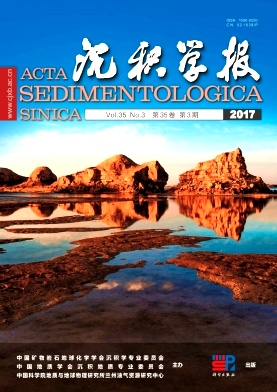Analysis on Sedimentary Period, Depositional Environment, and Provenance Tectonic Setting of Hongliuyuan Formation in Beishan Area
doi: 10.14027/j.cnki.cjxb.2017.03.005
- Received Date: 2016-06-23
- Rev Recd Date: 2016-08-08
- Publish Date: 2017-06-10
-
Key words:
- Beishan area /
- Late Palaeozoic /
- Hongliuyuan Formation /
- zircon U-Pb dating /
- turbitidy current sediment /
- tectonic setting
Abstract: The Beishan orogenic belt is the juncture area of Paleozoic Kazakstan Plate, Tarim Plate and North China Plate. Much remains to be discovered concerning the Late Paleozoic evolution in Beishan area. Therefore, the study on Late Paleozoic stratigraphy is of great importance to reveal the tectonic evolution. Hongliuyuan Formation was studied by isotopic dating,sedimentary facies analysis, grain size analysis and statistical analysis of detrital components in this paper. The LA-ICP-MS zircon U-Pb age of the volcanic rock at the bottom of Hongliuyuan Formation was 359.9±1.4 Ma, refering to regional paleontological data, which belong to the Early Carboniferous. Clastic sediments in the upper developed a large number of turbidite sedimentary structures and typical Bouma sequence, sandstone maturity was much lower, and the results of grain size analysis showed the grain size characteristics of turbidite deposition, which jointly suggest that Hongliuyuan Formation should belong to near provenance turbidite. In addition, statistics of detrital components, Qt-F-L, Qm-F-Lt and Qp-Lv-Ls diagram were used to study sedimentary tectonic background. The results showed that sedimentary provenance of Hongliuyuan Formation in Suanjingzi area are mainly from volcanic arc, and its tectonic setting should be the sedimentary basin adjacent to island arc.
| Citation: | CHEN Chao, PAN ZhiLong, XIU Di, WEI WenTong, ZHANG JinLong, ZHANG Huan, WANG Shuo, CHANG ZhiKai, WANG RenXia. Analysis on Sedimentary Period, Depositional Environment, and Provenance Tectonic Setting of Hongliuyuan Formation in Beishan Area[J]. Acta Sedimentologica Sinica, 2017, 35(3): 470-479. doi: 10.14027/j.cnki.cjxb.2017.03.005 |






 DownLoad:
DownLoad: